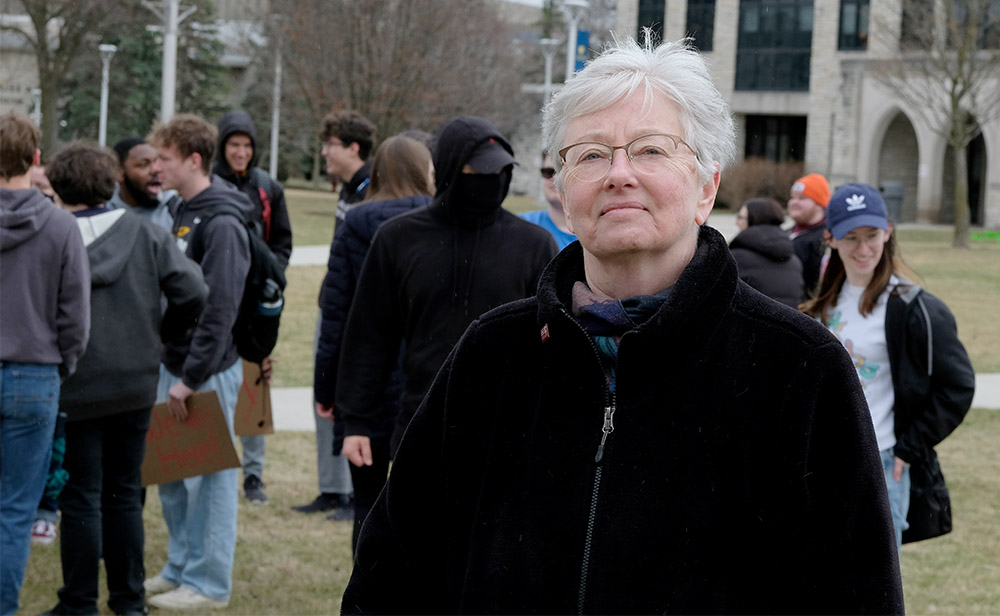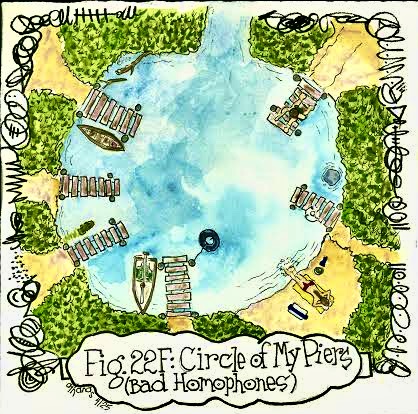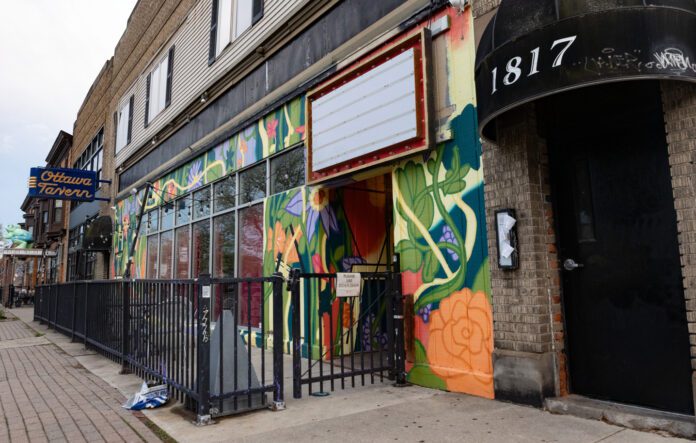Anne Grady Services raises disability awareness
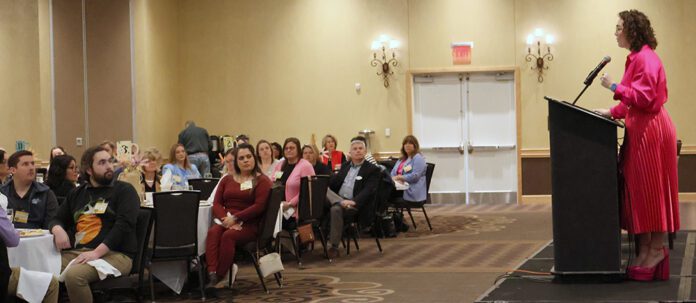
Coffee for a Cause highlights need for volunteers, donations
PERRYSBURG – Every year, Anne Grady Services hosts Coffee for a Cause, an event that raises awareness and fosters inclusion for children and adults with intellectual disabilities in the community.
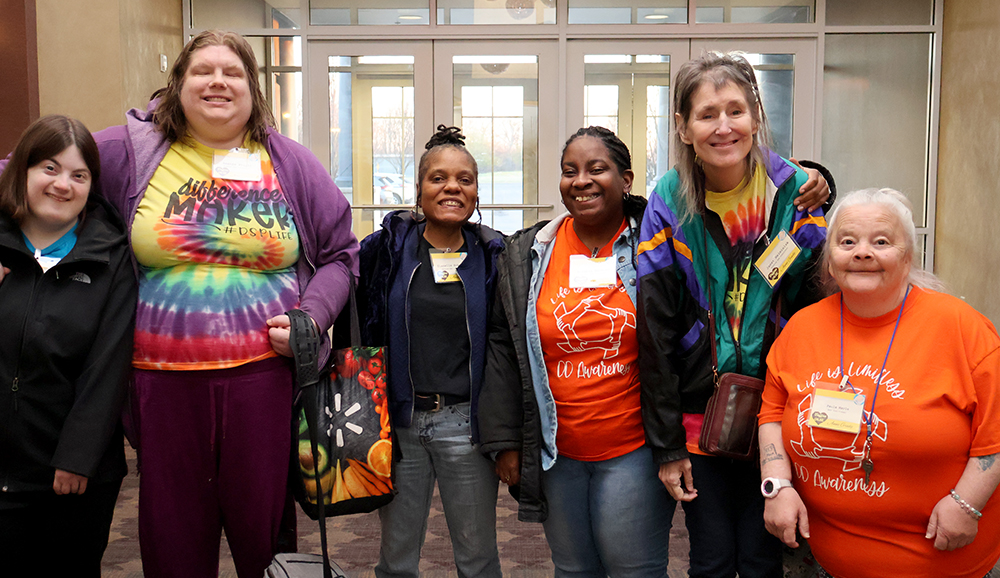
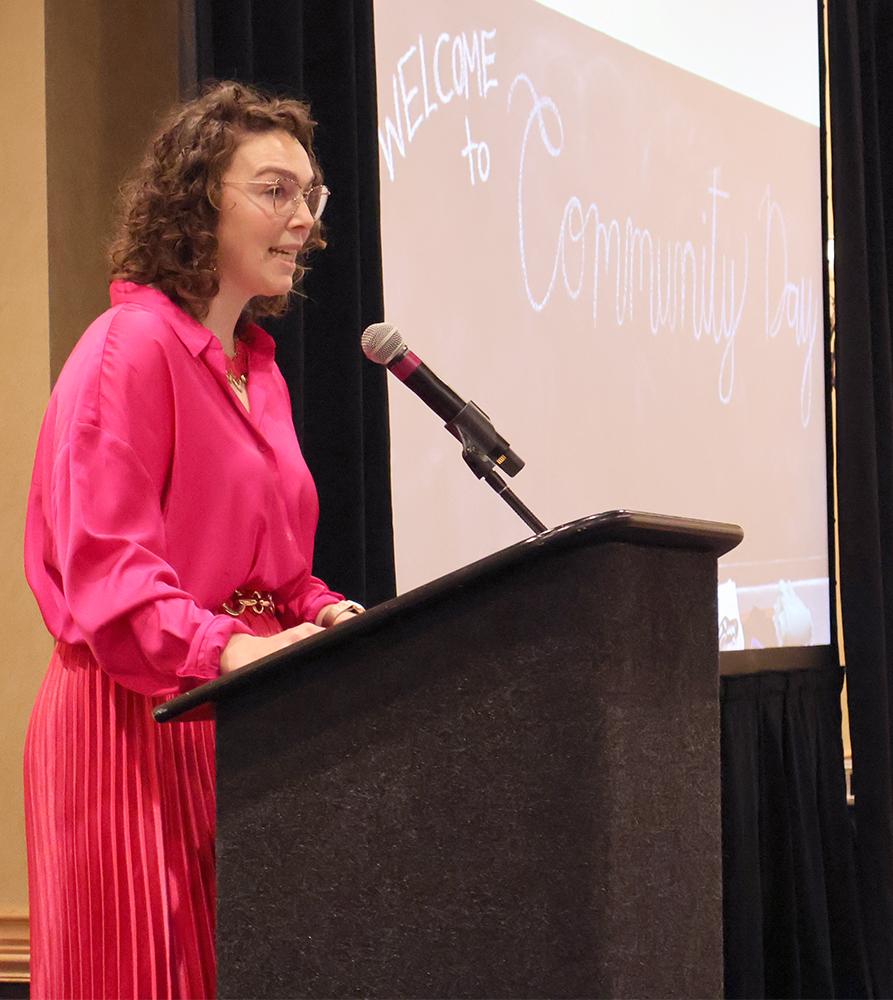
During the Coffee for a Cause event, it was announced that Noah’s House would reopen after a long respite.
“Ever since we had to pause this service during Covid, I have received endless calls from families in need of respite care,” said Julia Hage, director of mission advancement.
Not only is respite care on the horizon, but already individuals with intellectual disabilities have been taking advantage of the new therapy pool at Anne Grady Services.
At the event, a video played on screen showing the large, bright smiles on the faces of individuals splashing in the water and feeling freedom. Wheelchair users and others with physical disabilities are weightless in the water, a relief from pain that creates greater mobility.
Jim Weisz, who attended the event, said “hearing the impact the Anne Grady staff has on the lives of residents is inspiring and uplifting, especially given the current climate we live in. There is good in this world, and it’s right in our backyard.”
With the re-opening of the respite care, Anne Grady Services is doubling their efforts on fundraising for the Noah’s House Scholarship Fund, which assists families who cannot afford $300 per day for respite care services. Not only is respite care vital for caretakers, but it is very important for those with disabilities, as well.
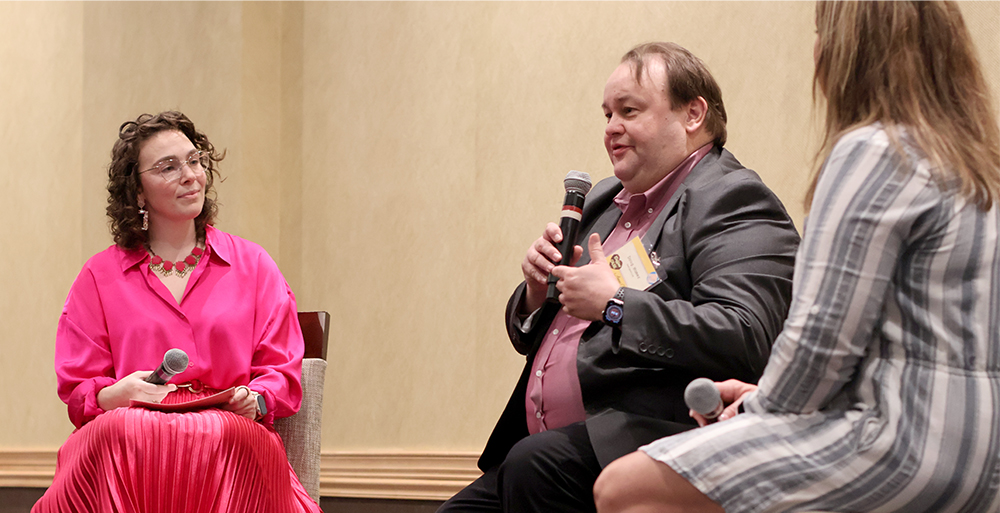
Receiving outside care opens the doors to new opportunities, like outings into the community, interest based programs, relationship building, and high quality medical care.
To donate to the Noah’s House Scholarship fund, visit the Anne Grady Services’ website.
BGSU research: Defining gray divorce
BOWLING GREEN – Despite contrary perceptions, research increasingly shows that divorce of couples at or over age 50 has risen significantly, despite overall divorce rates decreasing in the U.S.
This phenomenon is called gray divorce, something studied by Bowling Green State University (BGSU) professors Susan Brown and I-Fen Lin.
While the phrase was coined locally by the two researchers, it is now nationally used by prominent sources such as Psychology Today, USA Today and Forbes.
Brown and Lin began researching gray divorce in 2010 after a conversation about the divorce of Al and Tipper Gore made them wonder, “What makes people get divorced after 40 years of marriage?”
They didn’t expect to discover this was not as uncommon as they’d previously thought.
What started as a hallway conversation soon became a 15-year research project that is still ongoing.


“The divorce rate overall for the entire adult population of the United States has been declining, so it peaked in 1979,” Brown said. “We were really shocked to find out that it was actually increasing for older people and that it doubled between 1990 and 2010.”
Lin explained that gray divorce research can give context to how it will affect divorcées, particularly women.
“Our research findings have very important implications. We find that [with] the economic well-being after gray divorce, there’s a big drop for women but there’s a smaller decrease for men’s well-being,” Lin said. “People who experience gray divorce, they experience economic decline, and they don’t really have a lot of work years to recuperate.”
Brown pointed out that a factor of this recuperation has to do with the accumulation of wealth and assets to split, including Social Security money.
“Somebody who’s 60 or 65 years old and getting divorced…it’s very different than if you’re getting divorced when you’re 30 or 35,” Brown said. “When you’re young, you’ve got your whole adult life course ahead of you to make up for those financial losses…Whereas by the time you get into later life, people have had decades to accumulate assets.”
“We found that we can follow people for up to a decade after their gray divorce and they still haven’t recovered economically,” Brown said.
According to Brown, their research could influence policy decisions related to these economic issues.
“Your marital experiences during adulthood are related to your poverty status as an older adult. We think of Social Security as something that’s going to lift you out of poverty. But for a lot of older people, it’s sustaining them in poverty, and that’s particularly true for a gray divorced woman. 27 percent of them are living below the poverty line, even though they’re receiving Social Security,” Brown said.

Brown said some of the problems that arise for people who have experienced gray divorce are because of the assumptions made by those who created the system; firstly, that people wouldn’t divorce, and secondly, that a traditional nuclear family would remain a social norm.
“We’ve set our systems with these assumptions about what types of family support most people would have,” Brown said.
All these factors beg the question, why would someone get a gray divorce?
Along with more acceptance of divorce is our changing expectations of what constitutes a good marriage. It’s more about thinking about marriage from an individualized perspective. What is this marriage doing for me? Am I happy in this marriage? Am I fulfilled in this? And if I’m not, then getting divorced is acceptable.
Susan Brown | BGSU Professor
Gray divorce can’t be attributed just to one factor, however.
In later life, there are questions of who will be caregivers of the old. Brown said some spouses do not want to be caregivers, a factor that may lead to gray divorce increase.
Lin said increased lifespan may be another reason.
Despite all these reasons, Lin and Brown suspect the gray divorce trend is generation-specific.
“Susan and I still keep track of this gray divorce rate for the next few years to see the trend. But we suspect it’s more likely a baby boomer phenomenon,” Lin said.
In addition to divorce being more socially acceptable, so are other non-marriage options such as cohabitation.
Lin said gray divorce may not be as prevalent in the newer generations because they choose options alternative to marriage.
More information about Brown and Lin’s research can be found on here.
The dismantling of Department of Education: How it could impact TPS
TOLEDO – When President Donald Trump signed an executive order on March 20, effectively dismantling the Department of Education (DoE), he brought change to the U.S. education system as a whole.
The problem is that no one seems to know exactly how this cut will affect local schools throughout the United States, including Toledo Public Schools.
According to section one of Trump’s executive order: “Closing the Department of Education would provide children and their families the opportunity to escape a system that is failing them.”
While the idea is to return power to the states and the state education departments, the tasks have yet to be redistributed.
Another problem is that DoE is known largely for its role in providing funding to state schools.
Section two (a) of Trump’s executive order states: “The Secretary of Education shall, to the maximum extent appropriate and permitted by law, take all necessary steps to facilitate the closure of the Department of Education and return authority over education to the States and local communities while ensuring the effective and uninterrupted delivery of services, programs, and benefits on which Americans rely.”
But what, exactly, does that mean? As of April 8, Toledo Public Schools (TPS) had received no information from the government about the effects on local schools or funding, according to TPS communications coordinator Robert Wiercinski.
Section 2 part (b) of the executive order has this to say about the effects to school funding: “The Secretary of Education shall ensure that the allocation of any Federal Department of Education funds is subject to rigorous compliance with Federal law and Administration policy, including the requirement that any program or activity receiving Federal assistance terminate illegal discrimination obscured under the label ‘diversity, equity, and inclusion’ or similar terms and programs promoting gender ideology.”
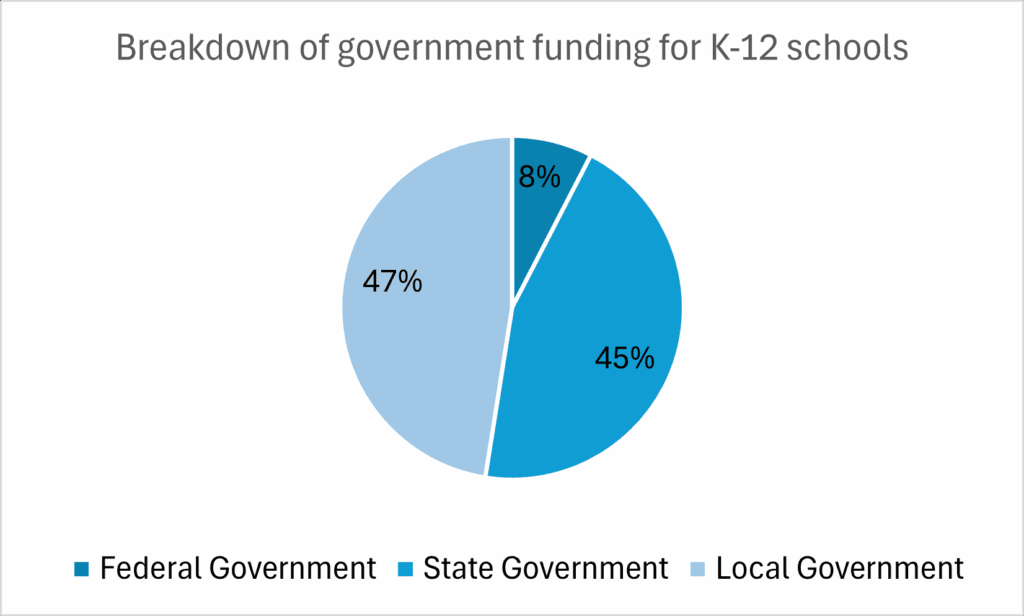
Despite the termination of funds to DEI programs, which primarily affects higher education, the order does not specifically mention how the tasks of the DoE will be redistributed or how schools will continue to receive their federal funding.
In the 2019-2020 school year, 7.6 percent of school funding came from the federal government, according to USA Facts, with the remaining 92.4 percent coming from state and local tax dollars.
While school funding has not yet been affected, Toledo Federation of Teachers (TFT) board member Dan Fray said it is a concern.
“We [TFT] are not really actively protesting anything as much as we’re just trying to get the message out that we need fair funding,” Fray said.
Fray has been a TPS teacher for the past 28 years and is in charge of member engagement, retention and development at TFT.
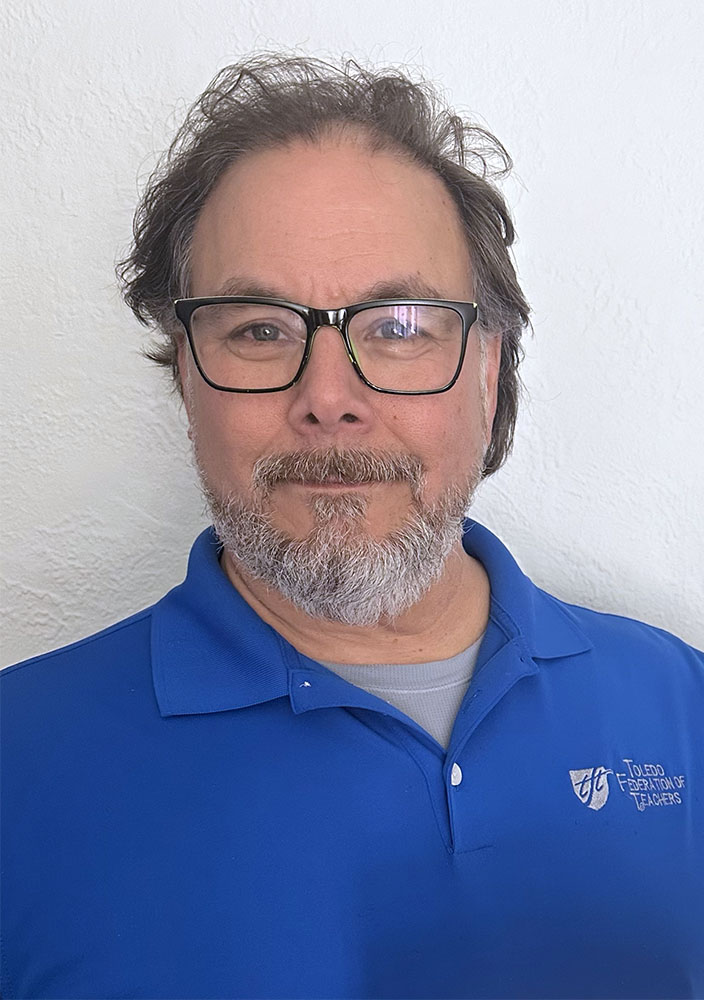
He explained that federal funding for Toledo schools typically goes to help with career tech and early childhood education programs.
“We’ve already had our kids be affected by some of the cuts from the federal administration early on,” Fray said. “Not too long after Inauguration Day, there was a lot of executive orders pausing funding for different programs.
“We had field trips that had to get cancelled because the organizations that were funding the field trips for the students thought they were losing their funding,” Fray said.
While the organizations later realized their funding was not actually lost, the panic surrounding the executive orders caused some students to miss the experience.
Fray also mentioned that federal funding helps TPS with Title One.
“Title One is a federal program that provides assistance to school districts and schools with a high percentage of low-income families, which Toledo does qualify,” Fray said.
If TPS funding were to be affected by the DoE cut, Fray worries that rather than just the federally funded programs being cut, the pool of money for all school programs will simply be diluted.
“My bigger concern is that all of them lose a little bit [of funding], such that all of them lose their effectiveness,” Fray said.
Regardless of what happens, Fray noted that TFT’s primary concern is for the students.
“Hopefully, if you’re a kid sitting in a second or third or eighth grade or high school classroom in Toledo, you never realize that this all happened. The school district and the Union and everybody, the community, all work together such that even if there is cuts, our students don’t notice it,” Fray said.
“That’s the end goal – just to make sure our kids go to school in a safe and rich learning environment, loved by their teachers and supported by the district and the community. And they don’t even realize that the Department of Education got cut,” Fray said.
New life for the Ottawa Tavern?
Iconic Toledo club set to reopen, but owner keeps options open
TOLEDO – The Ottawa Tavern, a beloved and historic local nightclub in Downtown Toledo, has a new lease on life.
With their debut show post-reopening now on the books for Thursday, June 12 at 7 p.m. with Gyasi headlining following by Dagger Polyester and Leadfoot Granny, the OT is back in business after a delay early this month.
“I’m not fully sure what we’re doing with it,” said Broc Curry, the new owner of the OT, as it’s fondly called, in an interview. “We’re just playing it very slow.”
Curry has been promoting concerts in Toledo for more than 25 years, most notably at his other iconic club, Frankie’s in East Toledo. He promoted his first concert in his hometown of Bowling Green when he was just 14.
Curry’s track record and connections in the music world would easily pave the way for the Ottawa Tavern’s return to a vibrant music scene – if that’s the path he chooses.
He had planned to hold a pop-up emo concert at the renovated club on April 1 as a way “let people come back into the space,” but had to cancel the show at the last minute when the city’s health department said he needed to file for a new license.
Curry said he is taking “baby steps ” as he looks at all options for the building. “Which direction we go … I’m not too sure yet.”
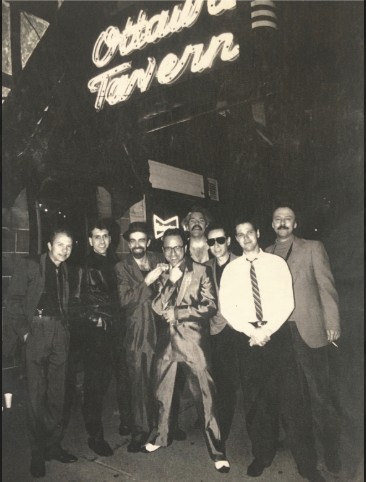
He took the same slow approach with Frankie’s, which closed in 2020 and reopened in July 2023. At first, Frankie’s held just a few concerts a month. But the club on East Main Street has gained momentum, and Frankie’s is now hosting 15 or more shows monthly.
“We’re pretty much open half the month right now, which is way more than I expected to be open again,” Curry said of Frankie’s. “But people want to play shows. People want to come to shows. Touring bands want to make a stop in Toledo, and we’re definitely super busy now.”
The reason Frankie’s has been so busy and successful is simple: Curry’s love of music.
“The people that make it a lasting endeavor are truly music people. It can’t be about money. In fact, you can end up losing a bunch of money. It can’t be about anything but the music. I’m just that guy. Since I was a kid, getting my ZZ Top and Stray Cats tapes at Finders Records; I just freaking love music.”
It’s possible the Ottawa Tavern will follow the same slow-but-steady path to building up its live music schedule, but Curry wants to keep his multiple business interests in balance and his options open.
In addition to owning two clubs, Curry owns the record and media store Your Music Exchange on Laskey Rd. in Toledo, two other record and media stores in Ann Arbor, and is getting ready to open a second Toledo shop. On top of that, he sells the most records through his online sites.
“My normal job is my record stores; the concerts are still very much my side business. But we have a small, dedicated staff. They are pulled in all sorts of directions and work long hours, but they love what they do. So you know, when you love what you do it’s not like work, right?”
Uptown building cleaned and painted
Getting the Ottawa Tavern ready was an “all hands on deck” effort by his staff at Innovation Concerts, with the team pitching in to clean and “whitebox” the building by painting the interior a neutral light gray.
There are plenty of options now for the Adams Street building, which has the potential to be a concert venue, a restaurant, a combination of the two, or a retail store run by Curry or another local entrepreneur.

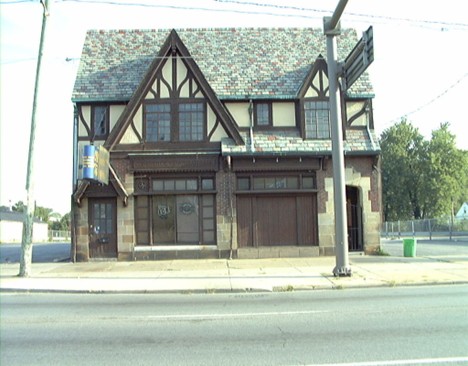
Curry is well aware of the Ottawa Tavern’s place in local history, especially its contributions to the local music scene. “I’ve heard stories over the years. I know it meant a lot to a group of people. It was kind of like the Cheers of Toledo, in a way, where everybody knows your name.”
The OT was one of the most popular clubs in Northwest Ohio at its original location, 1846 W. Bancroft St., near the University of Toledo. For decades it had a diverse clientele, ranging from college students and professors to golfers and tennis players dropping by after playing at nearby Ottawa Park. Monday night poetry readings regularly drew 50 to 60 people.
Originally built as the Commerce Guardian Trust & Savings Bank in 1929, it was transformed into a restaurant and renamed the Westmoreland Inn in 1934. A grand reopening in 1937 featured music by Whitey Walls and his Rhythm Boys, with Chinese and American food on the menu.
Renamed the Ottawa Tavern in 1942
The venue was renamed the Ottawa Tavern by Clarence Bihl, who bought the Westmoreland and held a grand opening of the OT on Jan. 17, 1942.
Its modern heyday as a music venue and social hotspot began in the late 1980s and continued through the mid-90s.
Owner Pat Hanley hired Therese King, who had run a number of restaurants and was plugged into the music scene, to manage the club in April 1991.
“It was very, very slow at the time,” King said. “That’s why he called me to manage it. I booked the bands, did the ordering. Pat gave me free reign to get it going again.”
She booked other top local and regional acts including the Homewreckers, Generra Pantera, The Flecks, Groovemaster, Pat Lewandowski, the Stain, and the Love Zombies.

National touring band the Dynatones played there, with Toledoan Walter “Shufflesworth” Salwitz on drums, and the famously eccentric singer Tiny Tim performed a concert at the OT in 1984, even getting an honorary key to the city presented by then-Mayor Donna Owens.
“We had the opportunity to back up Tiny Tim at the Ottawa Tavern,” recalled Steven J. Athanas, who was the lead singer of the Homewreckers. “That was a hoot. I remember Tiny Tim giving me a heart-to-heart about relationships.”
The OT had a fire-code capacity of 167 people, which it reached almost every night.
“I did a lot of promoting,” King said. “I’d go to the party in the park and do flyers. It’s so easy now with the internet and social media, but back then it was just handing out flyers. But I loved it.”
She said the Homewreckers played regularly and were one of the club’s biggest draws.
“People would call and say, ‘Are the Homewreckers there tonight?’ There was no internet then, so everybody would just call on the phone.”
Athanas, who fronted a number of popular bands and now is a columnist and cartoonist for the Toledo Free Press, said “it was always fun” to play at the OT.
“Our band was together twenty-bleeping-plus-years and we played the OT a good portion of that time,” he recalled. “They wanted us to be the house band and so did the Pub, which was down the street. They fought over us.”
With a horn section, the Homewreckers had seven or eight people on the stage. Just squeezing everybody onto the OT’s small stage was a challenge.
Holidays were epic at the OT.
“The Wednesday before Thanksgiving and on Christmas Eve people would be lined up out the door and around the building,” Athanas said.
King said there were nights when Generra Pantera was playing at the Ottawa Tavern and The Flecks were playing a few miles away at the Pub, once known as the Brass Bell, “and they would switch for a set. The Flecks would run down to the OT and Generra Pantera would run over to the Pub, play a set, and then go back. Can you imagine?”
The stolen stuffed-crow caper
King recalled some of the unique features of the OT, including a phone booth and a pair of stuffed crows.
“Someone stole one of the crows. Pat was so mad. He made up a wanted poster for the return of the stolen crow. I found out who did it and told him to just bring it back. One night there was a knock on my door and when I opened it, there was the missing crow.”
Hanley closed the Ottawa Tavern on June 30, 1996.
“I was distraught that night,” King said. “Everybody was so sad. People starting taking stuff off the walls that night – people who didn’t care about the place.”
The Bancroft Street building burned down on Jan. 14, 1999. Fire and police officials suspected arson. There was a strong odor of gas and an empty gas can in the basement, according to a police report.
Firefighters were unable to save the building, which burned in the early morning when the wind-chill factor was 30 below zero.
That was the end of an era, but the club experienced new life when accountant Tom Baird bought a building on Adams St. in Toledo’s Uptown neighborhood in May 2006 and found that the name Ottawa Tavern was available.
He tapped into the public’s nostalgia for the Ottawa Tavern when the new incarnation opened at 1817 Adams St.
King credited Adam Sattler for helping Baird get the OT going again as well as developing the Uptown area.
“It was an exciting time when they decided to open the club on Adams,” said King. “It was a very, very vibrant bar.”
The Uptown venue experienced some roller-coaster years until last December, when the former owner, Curry’s predecessor, shut it down with no advance notice.
Patrons and local musicians were left in the dark, stunned and disappointed and wondering what happened. Dozens of people vented their anger and dismay by posting comments on social media sites.
“I think it’s important to move forward and not dwell on the controversy,” Curry said, pointing out that whatever happened occurred before he bought the club. “I think people have forgotten about it, and they just want it back.”
King said she’s glad that the Ottawa Tavern has new life and hopes it becomes a thriving music scene once again.
But nothing will capture the magic of the original OT on West Bancroft, she said.
“So many different personalities brought that place to life. We didn’t know at the time that it was the club’s heyday, we were too busy working and having fun.”





